I'm trying to detect contiguous spans in which the relevant variable changes linearly within certain data in a DataFrame. There may be many spans within the data that satisfy this. I started my aproach using ransac based on Robust linear model estimation using RANSAC. However I'm having issues using the example for my data.
Objective
Detect contiguous spans in which the relevant variable changes linearly within data. The spans to be detected are composed by more than 20 consecutive data points. The desired output would be the range dates in which the contiguous spans are placed.
Toy example
In the toy exmple code below I generate random data and then set two portions of the data to create a contiguous spans that vary linearly. Then I try to fit a linear regression model to the data. The rest of the code I used (which is not shown here) is just the rest of the code in the Robust linear model estimation using RANSAC page. However I know I would need to change that remaining code in order to reach the goal.
import pandas as pd
import matplotlib.pyplot as plt
from sklearn import linear_model, datasets
import numpy as np
## 1. Generate random data for toy sample
times = pd.date_range('2016-08-10', periods=100, freq='15min')
df = pd.DataFrame(np.random.randint(0,100,size=(100, 1)), index=times, columns=["data"])
## 2. Set line1 within random data
date_range1_start = "2016-08-10 08:15"
date_range1_end = "2016-08-10 15:00"
line1 = df.data[date_range1_start:date_range1_end]
value_start1 = 10
values1 = range(value_start1,value_start1+len(line1))
df.data[date_range1_start:date_range1_end] = values1
## 3. Set line2 within random data
date_range2_start = "2016-08-10 17:00"
date_range2_end = "2016-08-10 22:30"
value_start2 = 90
line2 = df.data[date_range2_start:date_range2_end]
values2 = range(value_start2,value_start2-len(line2),-1)
df.data[date_range2_start:date_range2_end] = values2
## 4. Plot data
df.plot()
plt.show()
## 5. Create arrays
X = np.asarray(df.index)
y = np.asarray(df.data.tolist())
## 6. Fit line using all data
lr = linear_model.LinearRegression()
lr.fit(X, y)
For this toy example code a desired output (which I wasn't able to code yet) would be a DataFrame like this:
>>> out
start end
0 2016-08-10 08:15 2016-08-10 15:00
1 2016-08-10 17:00 2016-08-10 22:30
The graph generated looks like:

Error code
However when step 6 is executed I get below error:
ValueError: Expected 2D array, got 1D array instead: ... Reshape your data either using array.reshape(-1, 1) if your data has a single feature or array.reshape(1, -1) if it contains a single sample.
I would like to be able to detect in this example both contiguous spans in which the relevant variable changes linearly (line1 and line2). But I'm not being able to implement the example stated on the ransac code example.
Question
What should I modify in my code to be able to continue? And, may there be a better approach to achieve to detect the contiguous spans in which the relevant variable changes linearly?


